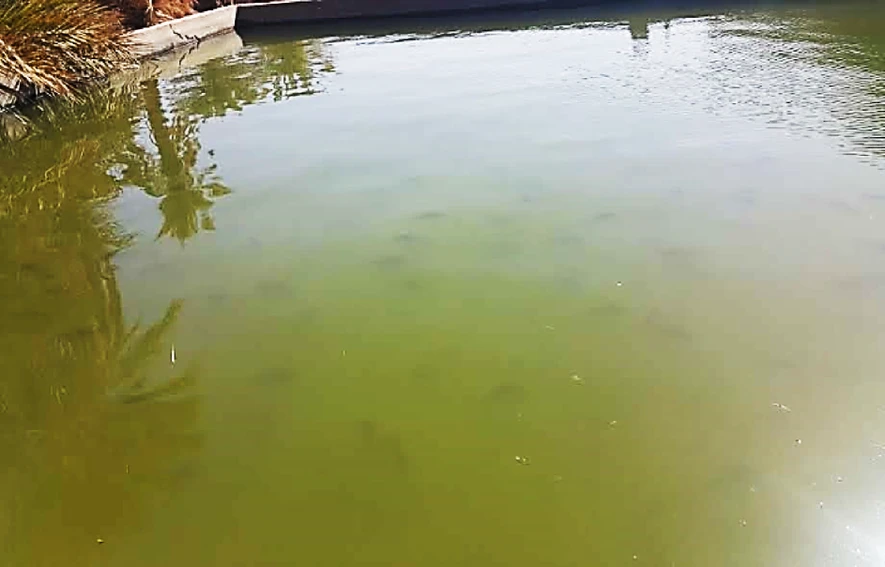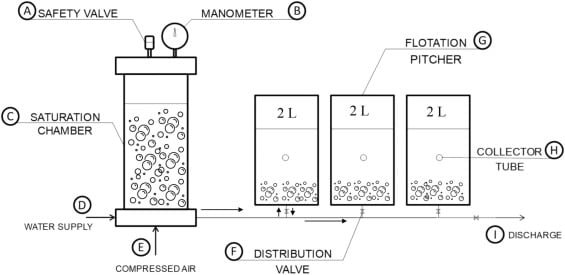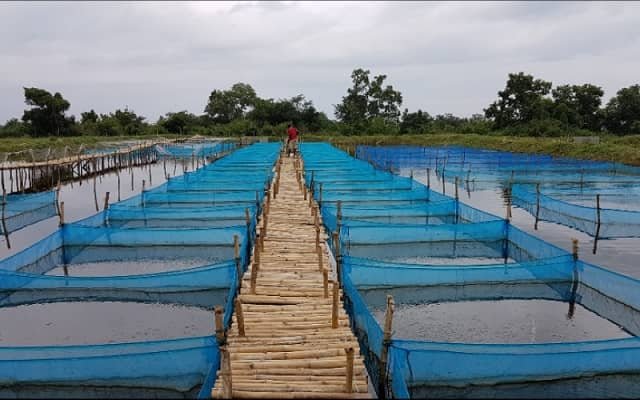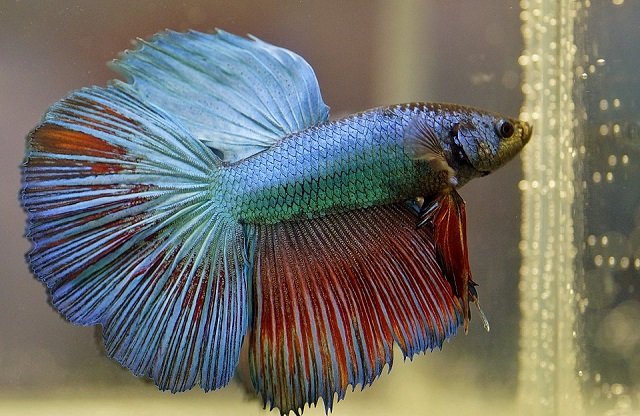
Intensive aquaculture, while vital for food security, generates effluents that require proper management. Fish farm wastewater is typically laden with organic matter, nitrates, phosphates, and suspended solids, resulting from uneaten feed and fish excreta.
A recent study by researchers from the Mohammed Tahri University of Bechar at a tilapia farm in Taghit-Bechar (southwest Algeria) evaluated a direct chemical treatment method to address this problem. The wastewater from this farm, currently discharged untreated, far exceeds Algerian standards for liquid discharges. The research, published in BMC Chemistry, focused on using coagulation-precipitation to remove organic matter, phosphates, and nitrates, offering a solution notable for its efficiency, simplicity, and low energy consumption.
Key findings
- Coagulation-precipitation is a highly effective method for treating fish farm wastewater, achieving contamination reductions below discharge standards.
- Aluminum sulfate (at 80 mg/L), ferrous sulfate (at 50 mg/L), and ferric chloride (at 50 mg/L) proved effective, establishing these as the optimal doses for treatment.
- Aluminum sulfate (80 mg/L) achieved some of the highest removal rates for Total Suspended Solids (95%), COD (96%), and BOD5 (87%).
- Ferrous sulfate (50 mg/L) was most effective at removing phosphates (99%), while aluminum sulfate (80 mg/L) was best for nitrates (95%).
- The treatment also almost entirely eliminated (98%) bacterial contaminants, such as fecal coliforms and fecal streptococci, at all tested doses.
Untreated aquaculture wastewater
Before treatment, analyses of the tilapia farm effluent revealed significant contamination. The levels of key pollutants were alarmingly high:
- Chemical Oxygen Demand (COD): 285.42 mgO2/L
- Biochemical Oxygen Demand (BOD5): 226.71 mgO2/L
- Total Suspended Solids (TSS): 45 mg/L
- Nitrates (NO3): 80 mg/L
- Phosphates (PO4): 2.60 mg/L
Furthermore, the water exhibited a high bacteriological load of fecal coliforms and fecal streptococci. These values confirm that the effluent poses an environmental risk if discharged directly into water bodies.
Testing three coagulants
The study utilized a standard water treatment method known as coagulation-precipitation. This process involves adding a chemical coagulant to the wastewater. This chemical destabilizes colloidal particles (both suspended and dissolved), allowing them to aggregate into larger, heavier flocs that can then be easily removed by sedimentation.
The researchers tested three commonly used inorganic coagulants:
- Ferric Chloride (FeCl3)
- Ferrous Sulfate (FeSO4)
- Aluminum Sulfate (Al2(SO4)3)
The method consisted of jar tests. Beakers were filled with 500 mL of the effluent, and increasing doses of each coagulant (10, 30, 50, 80, and 100 mg/L) were added. The process followed a specific mixing regimen: 3 minutes of rapid stirring (150 rpm) to disperse the coagulant, followed by 15 minutes of slow stirring (45 rpm) to promote floc formation, and finally 30 minutes of settling (sedimentation).
Stay Always Informed
Join our communities to instantly receive the most important news, reports, and analysis from the aquaculture industry.
Which coagulant was most effective?
The study evaluated the optimal dose of each coagulant and its efficacy in reducing different types of contaminants.
Optimal dosage: The key is concentration
A crucial finding was that more is not always better. For each coagulant, there was a specific concentration that achieved maximum contaminant removal. Exceeding that optimal dose can cause the particles to restabilize, worsening the water quality.
The optimal doses were determined to be:
- Ferric Chloride (FeCl3): 50 mg/L
- Ferrous Sulfate (FeSO4): 50 mg/L
- Aluminum Sulfate (Al2(SO4)3): 80 mg/L
Removal of organic matter (BOD, COD, and TSS)
All three coagulants showed excellent performance in water clarification and reducing the organic load at their optimal doses. The primary mechanism is the adsorption and entrapment of organic particles within the metal hydroxide flocs (Al(OH)3 or Fe(OH)3) that are formed.
Aluminum sulfate (at 80 mg/L) registered the best results in this category, achieving a reduction of:
- TSS: 95%
- COD: 96%
- BOD5: 87%
Ferrous sulfate (at 50 mg/L) was also highly effective, with reductions of 87% in TSS, 93% in COD, and 86% in BOD5. Ferric chloride obtained slightly lower, but still impressive, rates.
Nutrient removal (Nitrates and Phosphates)
The removal of nitrogen and phosphorus is one of the greatest challenges in aquaculture effluents. The study demonstrated that coagulation-precipitation is a powerful tool for this purpose.
The mechanism for phosphate removal is highly effective and relies on two pathways: chemical precipitation (aluminum or iron ions react with phosphate to form insoluble precipitates like AlPO4 or FePO4) and adsorption onto the hydroxide flocs.
The results at optimal doses were excellent for all three coagulants:
- Ferrous Sulfate: 99% (Phosphates) and 94% (Nitrates)
- Aluminum Sulfate: 98% (Phosphates) and 95% (Nitrates)
- Ferric Chloride: 97% (Phosphates) and 92% (Nitrates)
Disinfection: The removal of bacteria
A significant advantage of this treatment was its impact on bacteriological contamination. The raw wastewater had a high load of fecal contamination indicators (coliforms and streptococci).
The results showed that all three coagulants achieved a 98% reduction in the bacterial load, bringing the levels to zero or near-zero at most tested doses. Pathogens are eliminated by interacting with the formed metal species and by settling along with the suspended solids.
The critical factor: The influence of pH
The study also investigated how the initial pH of the water affects treatment efficiency. The results showed that different contaminants are best removed within different pH ranges.
- Organic matter (BOD, COD): Removal was most efficient in a slightly acidic to neutral pH range, between 6 and 8.
- Nutrients (Nitrates and Phosphates): Removal was most effective in neutral to slightly alkaline conditions, between 8 and 10.
Ferric chloride, in particular, seemed to perform best in these optimal pH ranges for both types of contaminants.
Conclusions and implications for aquaculture
This study demonstrates that chemical coagulation-precipitation is a highly effective and robust approach for the comprehensive treatment of fish farm effluents.
The best overall results were obtained with ferrous sulfate and aluminum sulfate. Importantly, after treatment with any of the three coagulants at their optimal doses, all analyzed parameters (TSS, COD, BOD5, nitrates, and phosphates) met Algerian discharge standards.
The authors conclude that this method is not only effective but also cost-effective and sustainable. Compared to other conventional treatment systems, it offers advantages such as lower energy demand and high adaptability to local resources, making it a practical option for sustainable aquaculture wastewater management, especially in arid regions.
Contact
Nouria Nabbou
Architecture and Environmental Heritage Laboratory (ARCHIPEL), Mohammed Tahri University of Bechar
Bechar, 08000, Algeria
Email: nabou.nouria@univ-bechar.dz
Reference (open access)
Nabbou, N., Benyagoub, E., Bekaddour, M. et al. Removal of organic matters, phosphates and nitrates present in pond wastewater using chemical coagulant solutions. BMC Chemistry 19, 278 (2025). https://doi.org/10.1186/s13065-025-01642-8
Editor at the digital magazine AquaHoy. He holds a degree in Aquaculture Biology from the National University of Santa (UNS) and a Master’s degree in Science and Innovation Management from the Polytechnic University of Valencia, with postgraduate diplomas in Business Innovation and Innovation Management. He possesses extensive experience in the aquaculture and fisheries sector, having led the Fisheries Innovation Unit of the National Program for Innovation in Fisheries and Aquaculture (PNIPA). He has served as a senior consultant in technology watch, an innovation project formulator and advisor, and a lecturer at UNS. He is a member of the Peruvian College of Biologists and was recognized by the World Aquaculture Society (WAS) in 2016 for his contribution to aquaculture.




